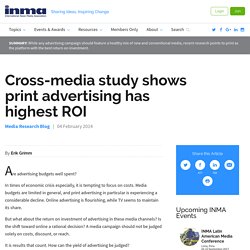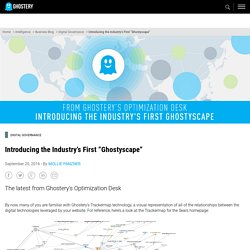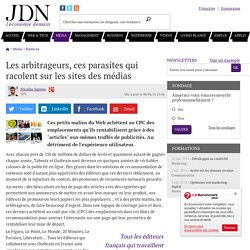

Advertising: A Lecture by Israel Kirzner - Foundation for Economic Education - Working for a free and prosperous world. This article is transcribed from a lecture delivered at FEE in 1971.

Advertising has been badly treated by many scholars who should know better. Not only Marxists and liberals, but even conservatives have given advertising a bad press. Let us examine some of the criticisms. First, many advertising messages are said to be offensive — by esthetic or ethical and moral standards. Unfettered, unhampered, laissez-faire capitalism, it is contended, would propagate such messages in a way that could very well demoralize and offend the tastes and morals of members of society. INMA: Cross-media study shows print advertising has highest ROI. Are advertising budgets well spent?

In times of economic crisis especially, it is tempting to focus on costs. Media budgets are limited in general, and print advertising in particular is experiencing a considerable decline. Online advertising is flourishing, while TV seems to maintain its share. But what about the return on investment of advertising in these media channels? Is the shift toward online a rational decision?
It is results that count. In the last few years, return on investment (ROI) has become the most popular key performance indicator to evaluate the selected media mix. Thorough method of measuring media ROI: Following the example of a German study, Dutch news media and GfK Research have studied the options to optimise media usage. In a study of 10 different multi-media campaigns, the additional sales of brands is compared to the media spend to calculate the yield of the advertising euro.
Remarkably, the print media are delivering the best returns. 06. The Ad Contrarian. Brands need to fire adtech – ART + marketing. Separating advertising’s wheat and chaff – Doc Searls – Medium. Advertising used to be simple.

You knew what it was, and where it came from. Whether it was an ad you heard on the radio, saw in a magazine or spotted on a billboard, you knew it came straight from the advertiser through that medium. The only intermediary was an advertising agency, if the advertiser bothered with one. Advertising also wasn’t personal. Two reasons for that. First, it couldn’t be. Second, the whole idea behind advertising was to send one message to lots of people, whether or not the people seeing or hearing the ad would ever use the product. In their landmark study, “The Waste in Advertising is the Part that Works” (Journal of Advertising Research, December, 2004, pp. 375-390), Tim Ambler and E. Plain old brand advertising also paid for the media we enjoyed. But advertising today is also digital. In terms of actual value to the marketplace, however, the old-fashioned stuff is wheat and the new-fashioned stuff is chaff. What put that ad there? Google isn’t one of them. Hence… Introducing the Industry’s First “Ghostyscape” - GHOSTERY.
By now, many of you are familiar with Ghostery’s Trackermap technology, a visual representation of all of the relationships between the digital technologies leveraged by your website.

For reference, here’s a look at the Trackermap for the Sears homepage: If you’ve followed my previous blog posts, you’ll also be familiar with my categorization of these technologies, where I’ve created a system for clients to better “bucket” the digital vendors that their organization leverages. The Average Website Has 75+ Digital Vendors With the analysis of millions of real-user data points, Ghostery has found that a large website has an average of 75+ digital technologies. To supplement this finding, a recent ActualTech Media & Soasta presentation noted that “a typical web page today can contain requests with upward of 75% happening via 3rd-party scripts.” Introducing the Industry’s First “Ghostyscape” Les arbitrageurs, ces parasites qui racolent sur les sites des médias. Ces petits malins du Web achètent au CPC des emplacements qu'ils rentabilisent grâce à des "articles" eux-mêmes truffés de publicités.

Au détriment de l'expérience utilisateur. Avec chacun près de 150 de millions de dollars de levés et quasiment autant de gagnés chaque année, Taboola et Outbrain sont devenus en quelques années de véritables colosses de la publicité en ligne. Des géants dont les solutions de recommandation de contenus sont d'autant plus appréciées des éditeurs que ces derniers obtiennent, au moment de la signature du contrat, des promesses de versements mensuels garantis. Au menu : des blocs situés en bas de page des articles avec des vignettes qui permettent aux annonceurs de mettre en avant leur marque ou leur produit, aux éditeurs de promouvoir leurs papiers les plus populaires… et à des petits malins, les arbitrageurs, de faire beaucoup d'argent. Tous les éditeurs français qui travaillent avec Outbrain et Taboola sont infectés Et l'éditeur dans tout ça ? Et aussi :